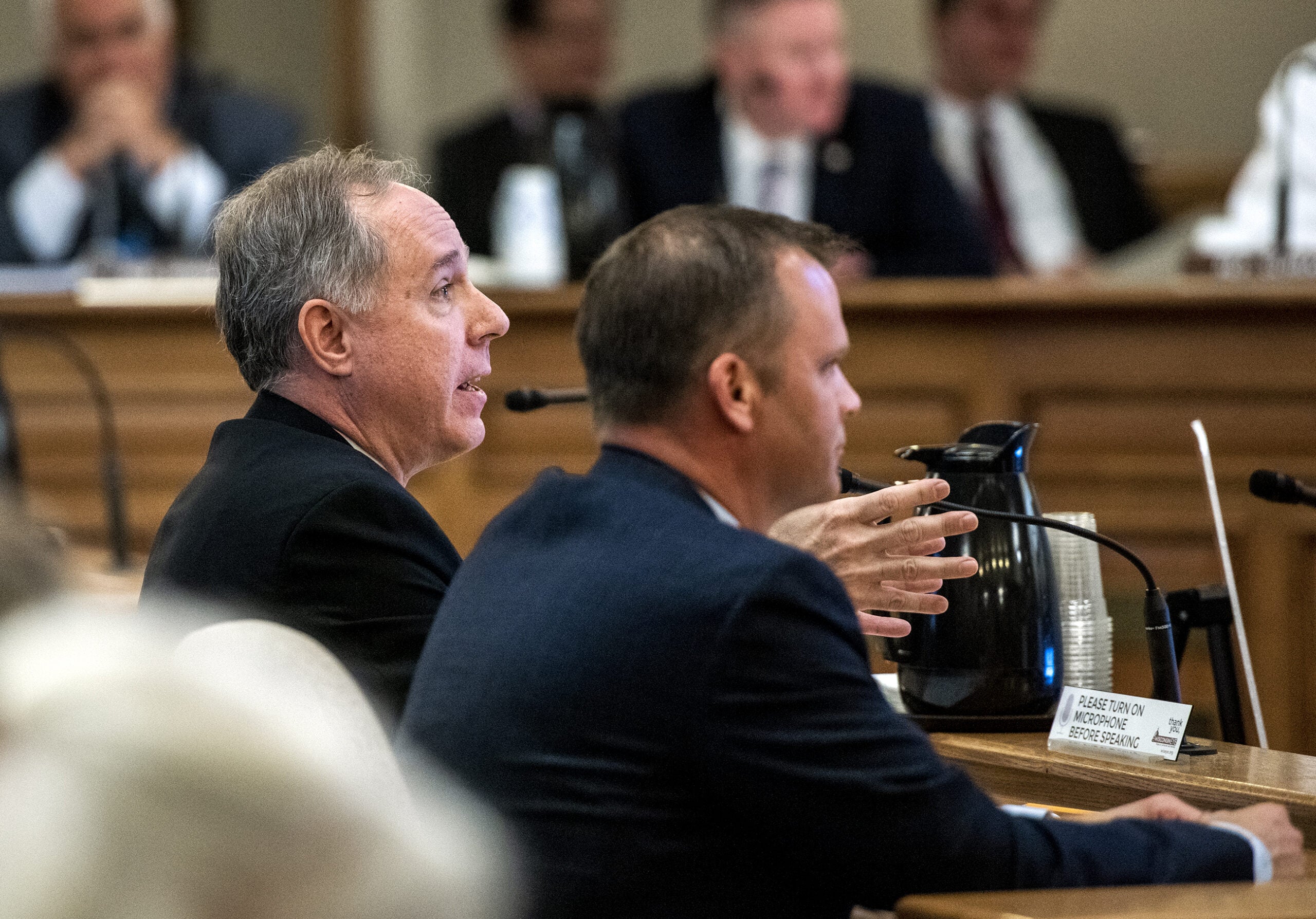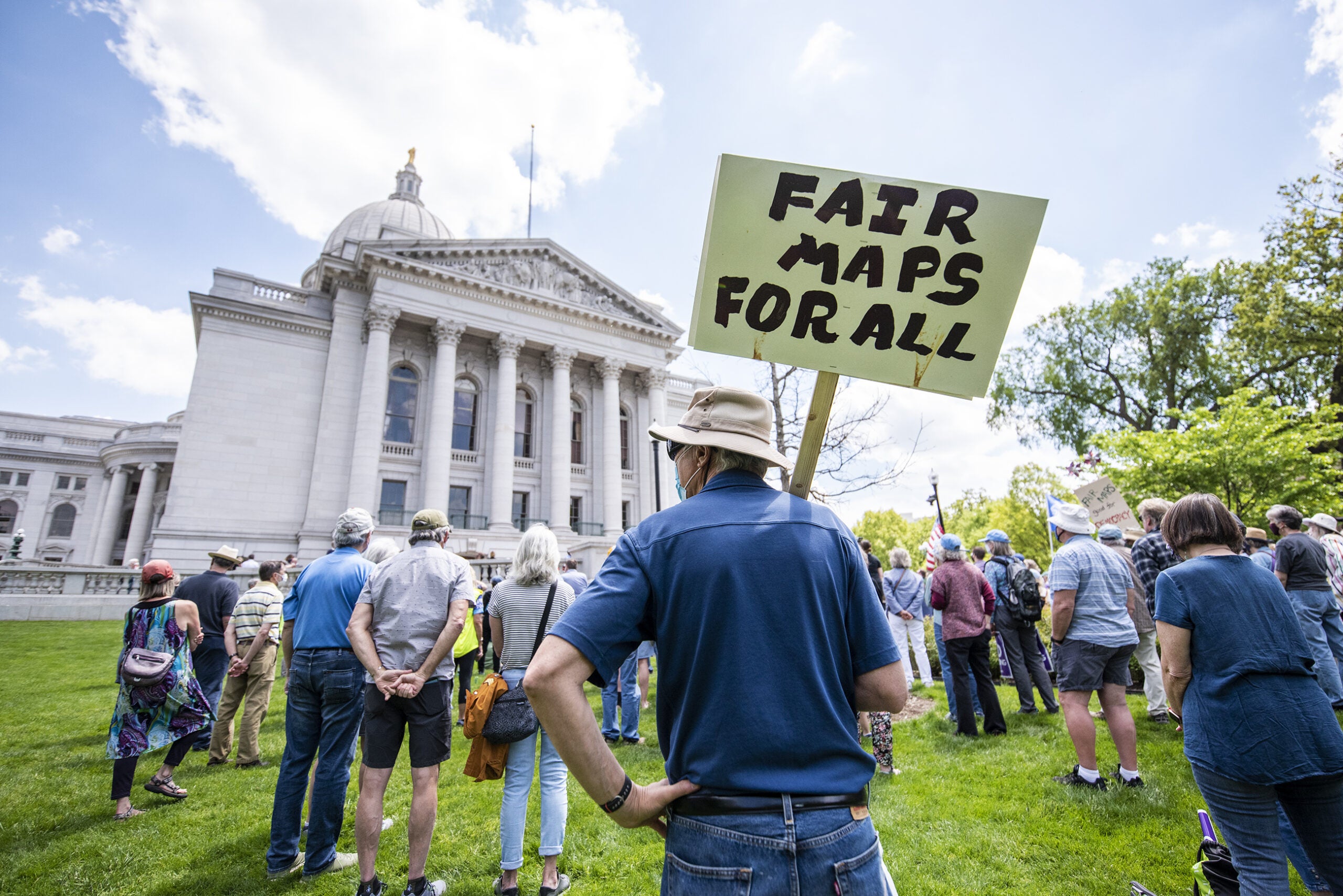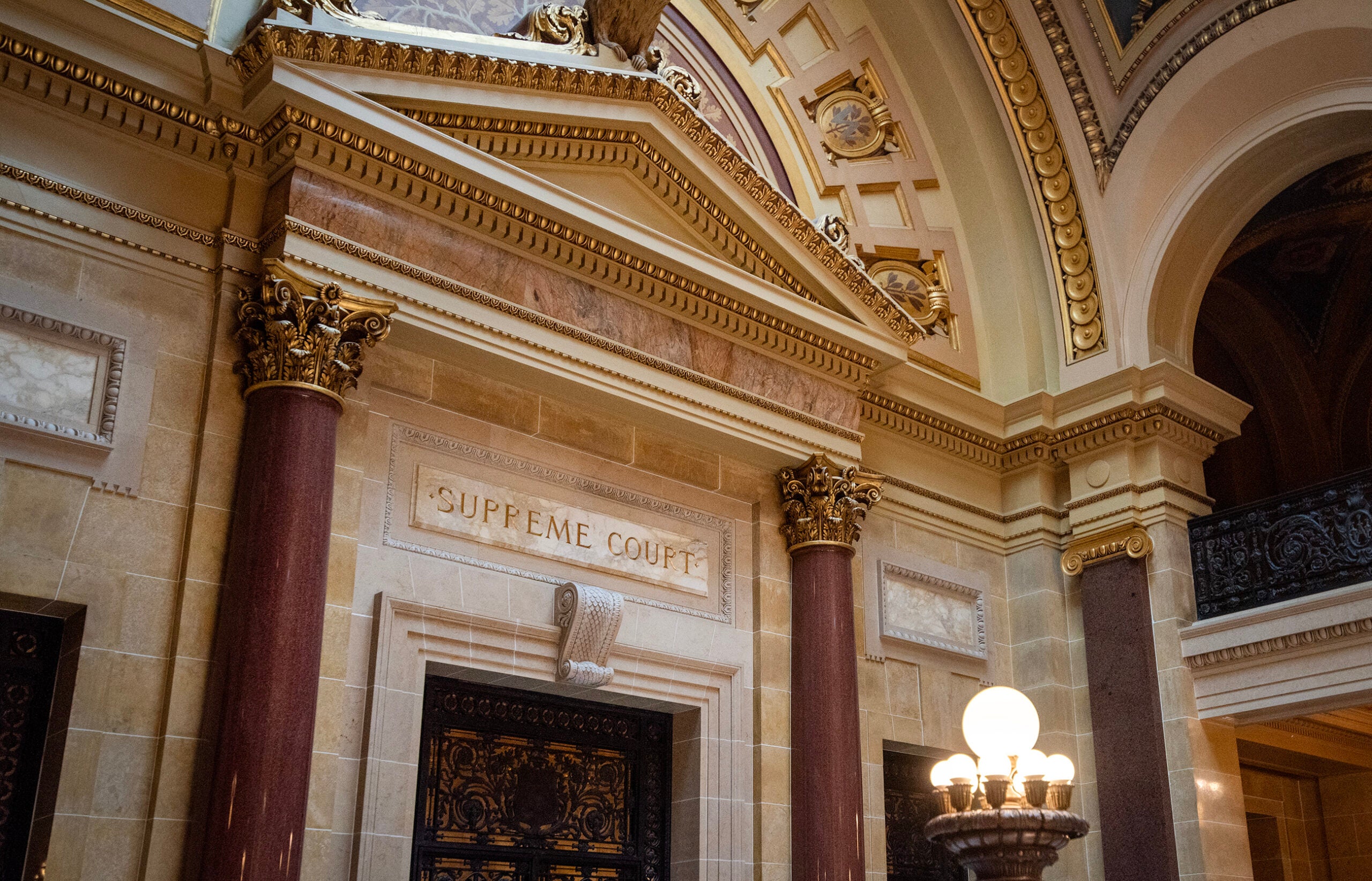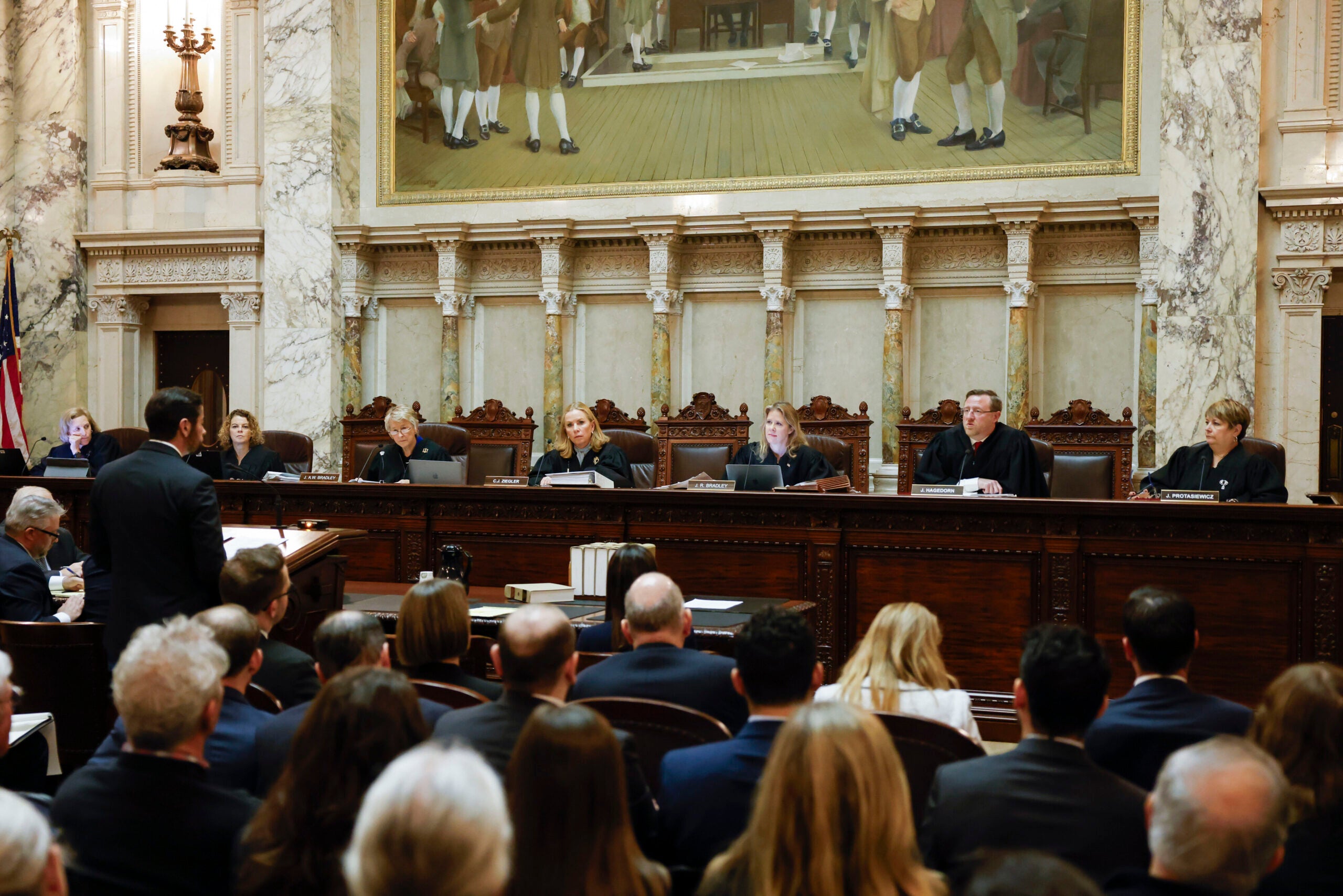In a decision released last week, the Wisconsin Supreme Court’s liberal majority said the current maps violate the Wisconsin Constitution. With the 2024 elections quickly approaching, this could change the political makeup of the state Legislature.
The decision could mean new legislative maps in 2024. WPR reporter Rich Kremer joined “Morning Edition” host Alex Crowe to help unpack the ruling.
This interview has been edited for clarity.
News with a little more humanity
WPR’s “Wisconsin Today” newsletter keeps you connected to the state you love without feeling overwhelmed. No paywall. No agenda. No corporate filter.
Alex Crowe: This ruling is a really big deal. According to the bench, how exactly did the maps violate the Wisconsin constitution?
Rich Kremer: The Supreme Court’s four-justice liberal majority ruled that the current Republican-drawn state legislative districts violated the state constitution’s requirement that districts be contiguous.
Contiguity refers to essentially the shape of a legislative district. And the constitution says that all pieces of a district for the purposes of voting for the individuals and residents inside has to be within a physical boundary. Essentially, it all has to be in the same location.
Writing for the majority, Justice Jill Karofsky said the constitution’s contiguity requirements mean what they say. She said current legislative districts contain separate detached territory and therefore violate the constitution.
Democratic voters who filed the lawsuit also argued that the Supreme Court’s former conservative majority violated the constitution’s separation of powers doctrine when it chose maps that were vetoed by Democratic Gov. Tony Evers. The majority didn’t address that claim because it had already decided the contiguity question.
The majority also refused to hold new elections for all 132 state lawmakers as petitioners wanted, and they called the move a “drastic remedy.”

AC: There’s going to be a big fight now over drawing some new maps. With this ruling, are we going to get new maps right away before the election in 2024? What does that process look like?
RK: The court didn’t immediately draw new legislative districts to replace those deemed unconstitutional, but like you said, they have to be in place prior to the 2024 elections. Justice Karofsky said she’s hopeful that the GOP-controlled Legislature and Democratic Gov. Tony Evers will agree on new maps.
In the meantime, they’re going to be proceeding toward adopting what they call remedial maps. What that means is in a separate court order, the majority laid out deadlines for maps and they appointed two national experts to oversee the process. Parties in the case have until Jan. 12 to submit remedial maps. These consultants have until Feb. 1 to file a report on the competing proposals.
The majority also said it will consider partisan impact when evaluating the remedial maps. But Assembly Speaker Robin Vos has said in recent months that the U.S. Supreme Court will have the last word on the redistricting litigation in Wisconsin. This week, he said the Legislature will pursue all federal issues arising out of the case.
AC: I thought it was interesting the way Vos said “all federal issues arising out of the case,” but of course, the fact that they’re not contiguous would violate a state law, not a federal law. Rich, this was a major win for Democrats, right? But state Republican legislators are really going to want to hang on to these old maps. What kind of challenge does that look like? Where do we go from here?
RK: Well, you kind of hit the nail on the head when you mentioned that the state Supreme Court focused on state issues and therefore, the U.S. Supreme Court wouldn’t necessarily be interested in taking that up. But with regard to Vos and the talk of appealing it to the nation’s highest court, it’s too soon to know what those sorts of appeals might look like.
Vos has hinted that there could be an argument from Republicans that Justice Protasiewicz violated the U.S. Constitution’s due process protections when she refused to recuse herself from the redistricting case after accepting $11 million from the Democratic Party of Wisconsin during her campaign.
Legal experts have said it’s far from certain that the nation’s high court would agree to hear that type of claim or rule in the Republicans’ favor. Depending on how the new maps are drawn and what they look like in Wisconsin, Republicans could claim that those new maps violate the Federal Voting Rights Act. That’s something that the U.S. Supreme Court has taken more interest in in recent years. That’s how the U.S. Supreme Court got involved in Wisconsin’s redistricting lawsuit two years ago.
Vos said this week that Democrats racially gerrymandered voting districts to obtain a political goal last time and he expects they’ll do the same again. And he hopes the U.S. Supreme Court will refuse to allow it this time as well.
You can hear the extended version of this conversion on the Wisconsin Today podcast. For more on the history of redistricting in Wisconsin and how it impacts political power in the state, check out WPR’s investigative podcast series, “Mapped Out.”
Wisconsin Public Radio, © Copyright 2026, Board of Regents of the University of Wisconsin System and Wisconsin Educational Communications Board.



